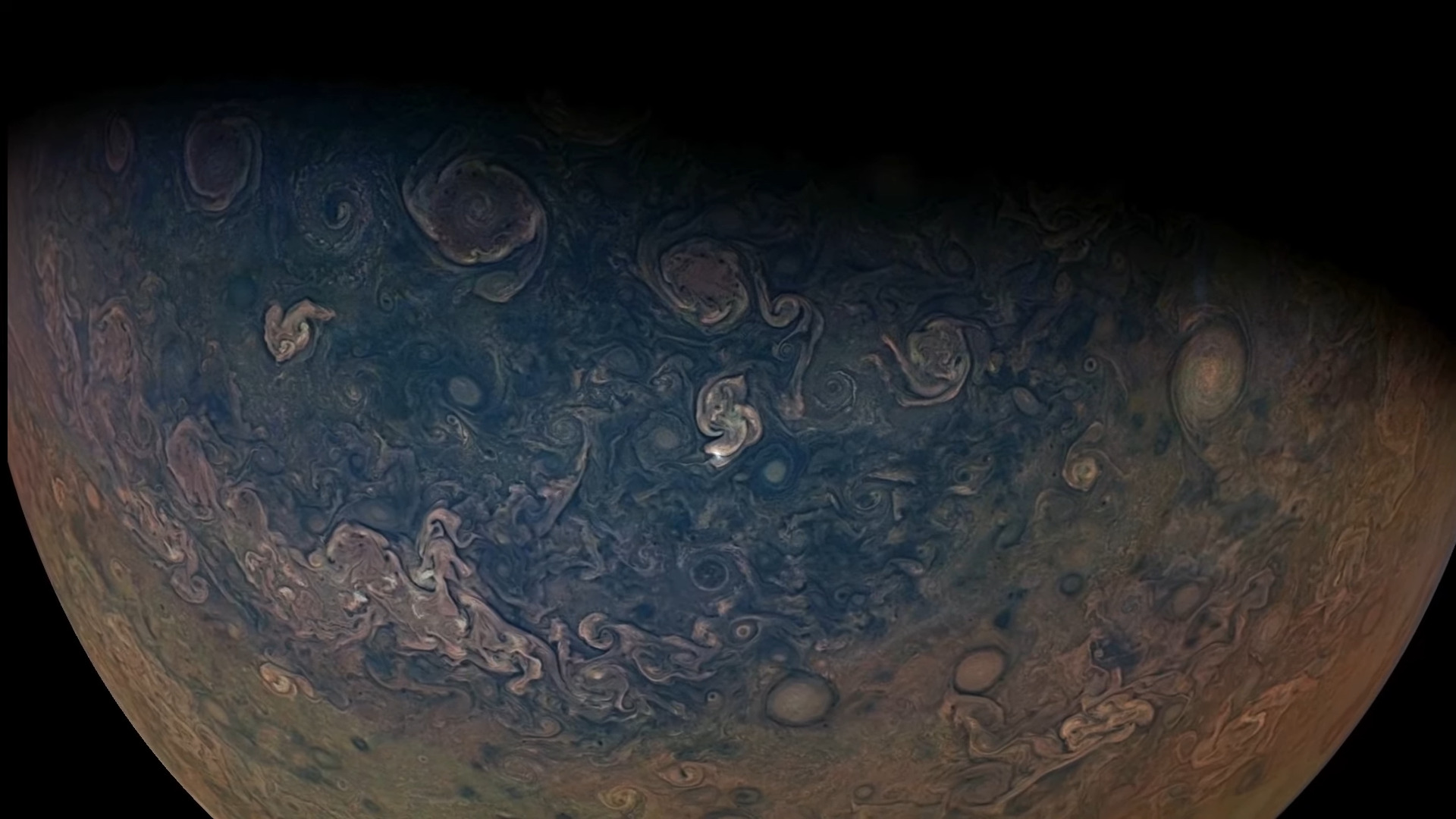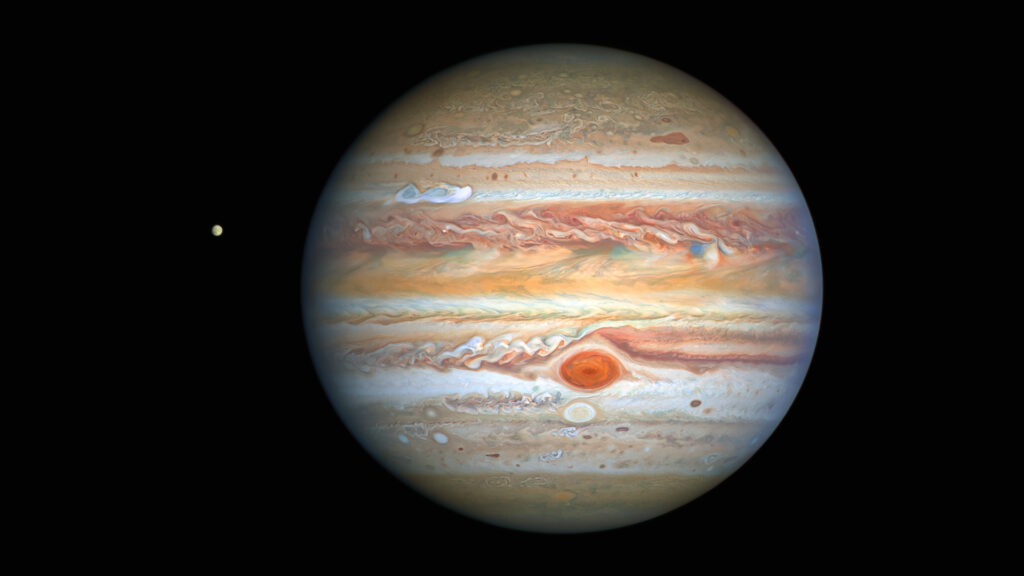
Based on the photos taken by the Juno probe, NASA has developed an animation showing the flight over the planet Jupiter and its moon Ganymede.
It was in early June 2021 that the Juno probe flew over Ganymede, one of Jupiter’s moons. A relative overview, of course, because the machine was still nearly a thousand kilometers from the surface of the satellite when it took its series of pictures. Despite everything, the star had never been approached so closely by a probe for two decades.
A flyover animation of Jupiter and Ganymede
It is precisely these images, as well as those taken from Jupiter, which served as the basis for an animation that the American space agency has been sharing since July 14 in a video published on YouTube. It gives a glimpse of the two worlds, thanks to a technique which consisted of making an orthogonal projection of the photos taken by JunoCam onto a digital sphere, as if they were actually hovered over them.
” The camera point of view for this time-lapse animation has been generated […] from composite images of Ganymede and Jupiter. Synthetic images have been added to provide views of the approach and departure of Ganymede and Jupiter », Explains NASA. The rendering was produced by Gerald Eichstädt, Koji Kuramura and Mike Stetson
NASA is taking advantage of this video to draw the public’s attention to the characteristics of Ganymede and Jupiter, such as the light and dark areas of the moon (a contrast which would be due to the phenomenon of sublimation of the ice in the vacuum of space, which would mark the ground with dark traces), but also the circumpolar cyclones at the north pole of the gas giant, as well as its vast storms in the southern hemisphere.

” Using the information Juno learned while studying Jupiter’s atmosphere, the animation team simulated the lightning that could be seen as it passed over the giant thunderstorms of Jupiter. », Explains NASA, thus accentuating the realism of the video. But everything is obviously not simulated: the Tros crater on Ganymede does exist and it is one of the most visible marks of the moon.
The Juno probe has been orbiting the Jovian system since July 2016, when it entered orbit. His operational career is far from over. Satisfied, NASA made the decision at the beginning of the year to extend it for several years, until 2025. When the time comes to put an end to it, the space agency will rush Juno to make it disappear into the atmosphere. of Jupiter.
In the meantime, Juno will continue to supply data scientists and audiences with spectacular visuals. A next flight over Jupiter is also scheduled for July 21, 2021. In addition to the study of the planet – the largest in the Solar System – its immediate environment is also of interest: (several crossings of the rings are planned, in addition to the overflights of Ganymede, Europe and Io.


